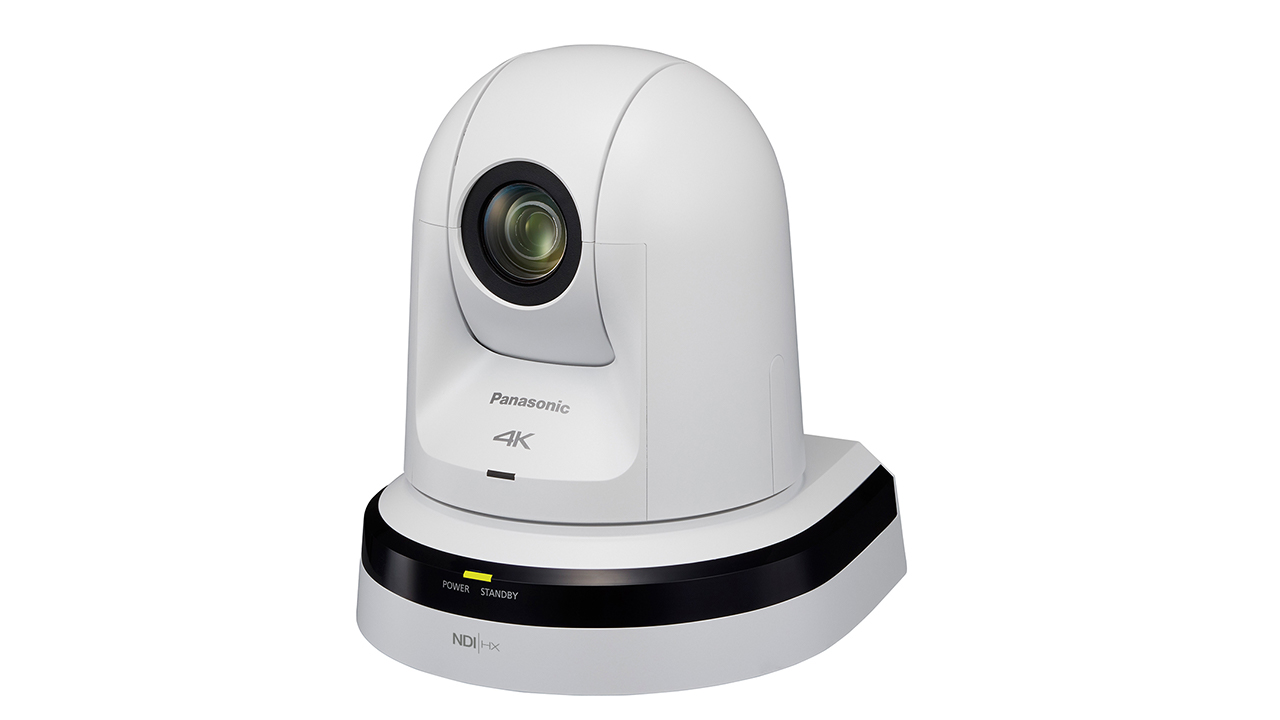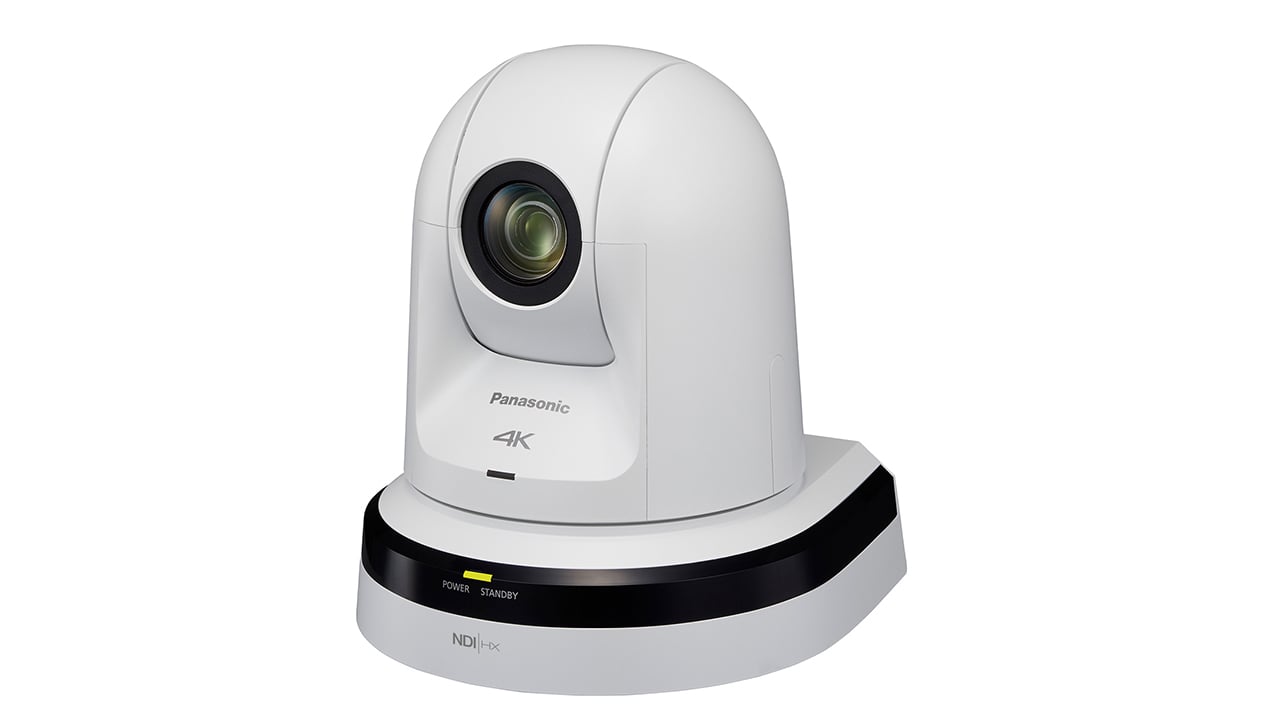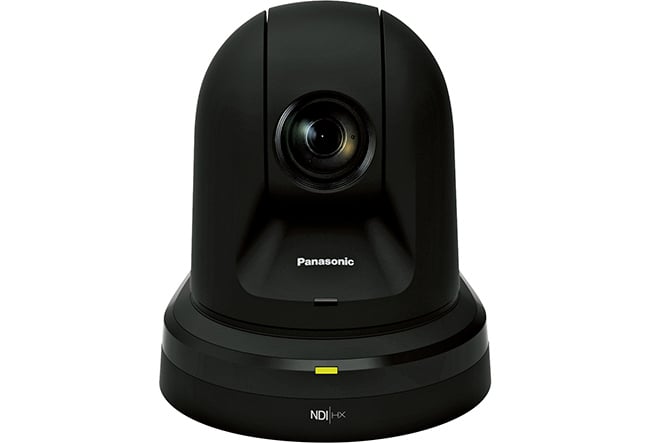

PTZ cameras can now be network cameras. And that changes almost everything.
PTZ (Pan, Tilt and Zoom) cameras from Panasonic now have impressive quality, which means that they're suitable for a very wide range of applications, from E-Learning to small TV studios, webinars to esports.These small cameras are unobtrusive, remotely controlled, and are now exceptionally easy to install.
But perhaps the biggest advance of all is network compatibility. While there have been network cameras before, Panasonic’s PTZ cameras have built-in support for NDI via NDI|HX . It’s a network system that simplifies and greatly enhances the ability to send video over standard network cables and routers. There’s another huge benefit: everything (that’s power, signal and control) goes over a single cable.
NDI has some remarkable abilities, the most important of which is that it's very easy to set up and use. And it works over ordinary networks. There's no need for special "video quality" network equipment.
As you'd expect, NDI (Network Device Interface) works best on networks that aren't already clogged up with other traffic, but beyond that obvious requirement, it has modest needs, and Panasonic PTZ cameras use NDI|HX, an especially low bitrate version of NDI. It means that a single 1Gbit/s network cable can carry the "signal" from dozens of cameras, each to the same destination, or to multiple places at the same time.
You don't have to worry about quality, either: Panasonic's implementation of NDI|HX is visually lossless. The pictures look great, even though they might share the same cable as many other video signals. Panasonic PTZ cameras can work up to broadcast/professional quality, so you can be assured that great pictures go in to the network, and come out of it at the other end.

Moving video around on a network has so many advantages that it's hard to know where to start.
There's no need for specialist video equipment: no SDI or Coax, no routers - and no input and output connections. NDI virtualises I/O so you're not bound by the number of cables or physical connections that you have.
NDI 3.0 even supports multicasting. With this new facility you can send the same video signal to almost any number of destinations without taking any more bandwidth than for a single stream. This is ideal where you. This is ideal where you have many clients accessing the same stream throughout a production environment from monitoring to recording, control and graphics
NDI cameras are largely self-configuring. Every camera "announces" itself on the network so that it can be "discovered" by other NDI devices, which can include video switchers or even recorders that are NDI-enabled. You never have to deal with IP addresses.
With a suitably fast network, there's no need for any special wiring. Just plug any camera into any network socket, and its output is ready to use, anywhere. Better still, for new installations, just install a fast network and you'll never have to change your wiring again.
NDI supports audio as well, If audio is fed into the audio input on a Panasonic PTZ camera, it will be perfectly synchronised with the video, wherever it goes. NDI supports PTZ control information and Tally too.
More than anything, Panasonic's IP-friendly PTZ cameras represent ease of use. Easy to install, easy to set up, and easy to produce great-looking video content with. Video, audio, control and power over one cable means that you can put them virtually anywhere. For more information visit (US) and (Europe).
Tags: Production


Comments